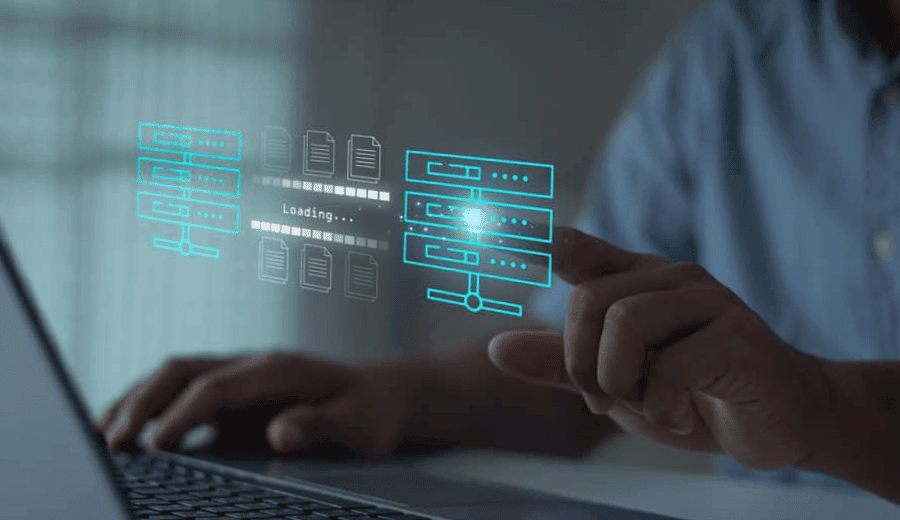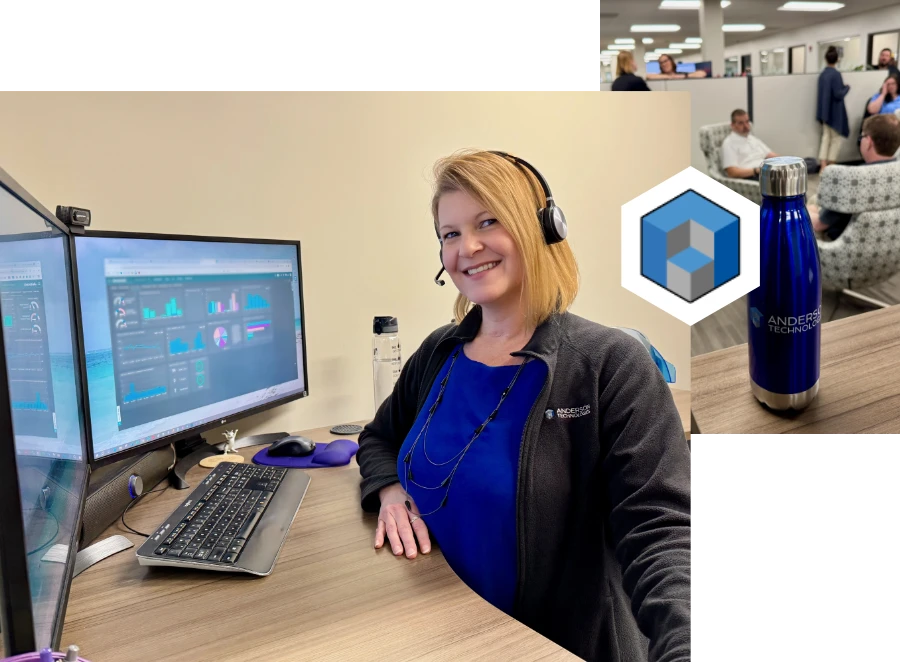Data and Recovery Services in St. Louis
Protect Your Valuable Reputation and Digital Data
Why Data Backups Matter
Fire, flood, ransomware, theft, data corruption, and hardware failure are all able to wipe out your business’s critical data and halt productivity, sometimes permanently. When disaster strikes, data backup and recovery saves businesses of all sizes from devastating loss.
The information you use for day-to-day operations needs protection from unexpected circumstances, but the environment your business functions in may require a unique approach to data recovery in St. Louis. Anderson Technologies can help you develop a proactive, customized disaster recovery plan that ensures business continuity no matter what.


Delivering Rapid Data Recovery Services in St. Louis and Beyond
Disaster recovery solutions can look a few different ways, depending on the needs of your individual business. Most companies use some combination of on-premise or virtual servers, local workstations, or cloud repositories. Online workspaces can vary too, so you want to make sure your data recovery service will mesh with your network and integrate seamlessly with the systems your team is used to.
Not only do reliable data backups ensure minimal downtime during a ransomware event, but they can also be a requirement for insurance or industry compliance. Our commitment to your disaster recovery and business continuity guarantees we’ll act as a partner every step of the way, confirming your data backup and recovery solution remains failproof and meets every necessary regulation.
Why Choose Us for Data and Recovery Reassurance?
Proactive Prevention and Rapid Response
Comprehensive Disaster Recovery Planning
Industry and Compliance Expertise
Personal Support with Enterprise Solutions
Client Insights, Quotes,
and Recognition
The Value We Create For Our Clients Matters Most
Anderson Technologies has always provided excellent service since we began using them. From being friendly when you have forgotten your password for the nth time to setting up and restoring networks. I also consider the aspects of protection that is provided that we take for granted.”
– A.H., Project Manager, Professional Services
Our Secure Data Recovery Service Features:
Data Backup Solutions
Comprehensive Protection for All Your Critical Data
Comprehensive assessment and implementation of robust backup systems designed to protect your business-critical information.
Our team configures automated data backup and recovery solutions that work seamlessly in the background, ensuring your data is continuously protected without impacting daily operations.

Microsoft 365 and G-Suite Backup Solutions
Custom Solutions within Familiar Platforms
Proper backups are paramount to protecting your business in the case of a natural disaster, system failure, or cyberattack.
We fortify your business continuity within platforms that are second nature to your team, providing expert configurations and training for comprehensive disaster recovery protection.

File Sharing and Collaboration
Highly Customized Data Environment with Built-in Protection
Specialized fields require specialized data recovery solutions. Our team tailors cloud platform solutions that integrate with the industry tools you need while maintaining robust backup protection.
This includes comprehensive user training and expert implementation to keep your team working efficiently with complete data protection.

Hard Drive and Physical Data Recovery Service
Professional Recovery for Physical Storage Failures
When hardware fails, our hard drive data recovery service can often recover critical data from damaged or corrupted storage devices.
We work with specialized recovery labs to retrieve data from failed hard drives, SSDs, and other storage media, providing hope when disaster strikes your St Louis business.

Disaster Recovery Testing and Validation
Ensuring Your Recovery Plan Actually Works
Regular disaster recovery testing ensures your backup systems will perform when you need them most.
We conduct scheduled tests of your recovery procedures, validate data integrity, and update documentation to guarantee your disaster recovery plan is ready for any emergency.

Business Continuity Planning
Comprehensive Strategies for Operational Resilience
Beyond data protection, we help develop complete business continuity plans that include disaster recovery, communication strategies, and operational procedures. Our planning ensures your business can maintain operations even during significant disruptions.

Frequently Asked Questions
Can’t Find What You’re Looking For?
We'd Love to Chat With You
How often should we backup our business data?
Most businesses need daily automated backups for critical data, with some requiring real-time or hourly backups depending on their operations.
Our data backup and recovery service includes customized scheduling based on your business needs and can range from continuous replication to scheduled nightly backups.
What's the difference between backup and disaster recovery?
Backup refers to copying your data to another location, while disaster recovery encompasses the entire process of restoring operations after a disruption.
Disaster recovery includes backup systems, recovery procedures, testing protocols, and business continuity planning to ensure complete operational restoration.
Can you recover data from a failed hard drive?
Yes, our hard drive data recovery service can often retrieve data from failed storage devices, including mechanical failures, logical corruption, and some physical damage.
Success rates vary based on the type and extent of damage, but professional data recovery techniques can often salvage critical business information.
How long does data recovery take?
Data recovery timeframes depend on the amount of data and recovery method used. Simple file restores from backups typically take minutes to hours, while hard drive data recovery service from damaged media can take several days.
Our disaster recovery planning includes realistic timeline expectations for different scenarios.
Do we need disaster recovery if we're a small business?
Absolutely – small businesses are often more vulnerable to data loss because they have fewer resources to recover.
Disaster recovery planning and reliable data backup and recovery systems are essential for businesses of all sizes, and we offer scalable solutions designed specifically for small businesses in St. Louis and beyond.
Could a Hidden Vulnerability be Putting Your Business at Risk?
If you’re not 100% sure, it’s time to find out.
Book your Free Cybersecurity Audit & Plan and get a clear, jargon-free review of your systems, risks, and security gaps. We’ll provide expert insights and a tailored roadmap to help you stay protected and compliant.

